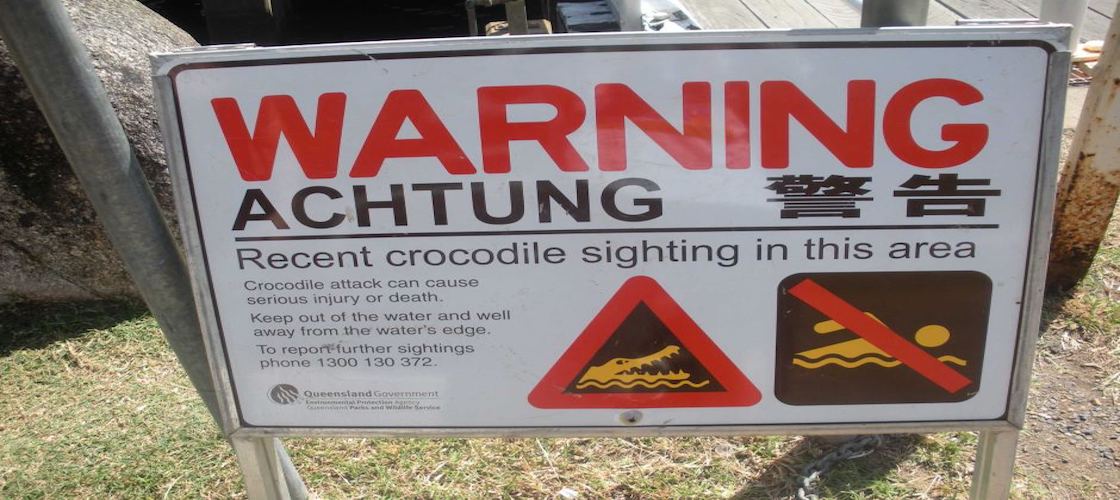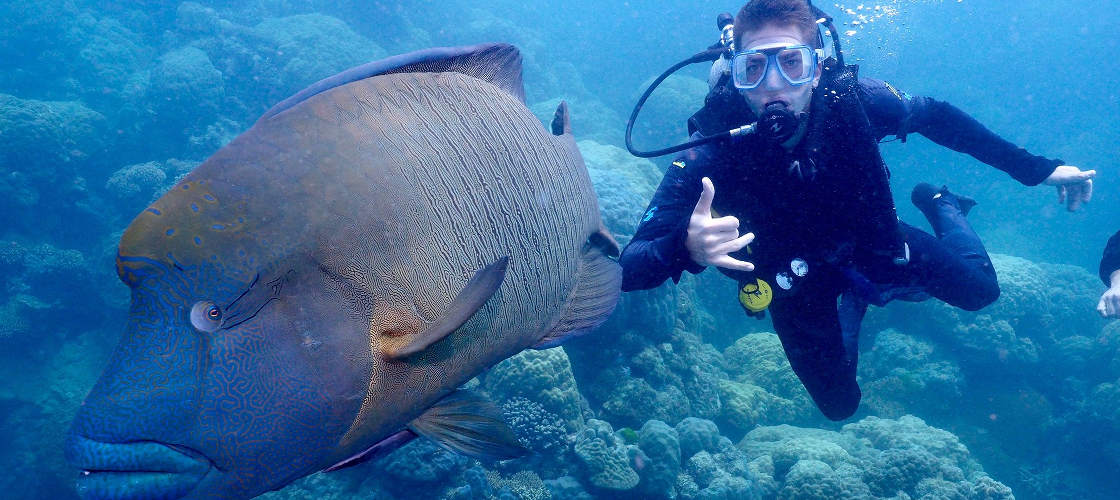Great Barrier Reef Safety Tips
Stay safe while enjoying Australia's greatest natural wonder.Be honest about your swimming ability
If you are swimming from a beach that is staffed by lifeguards then swim between the red and yellow flags and don’t venture out too far as you need to be able to swim back. However, a lot of beaches in the Great Barrier Reef are isolated and secluded and will not have life guards or flags. You will need to use your own judgement and swim at a depth that is comfortable for you.
If you are not a comfortable swimmer let the staff on board day cruises know so that they can provide you with floatation devices and advise you on which areas to swim and snorkel in close to the boat. Remember that when you head out on a day cruise you will be swimming in the ocean and unable to touch the bottom for support.
If you CANNOT SWIM at all then a pontoon cruise is a better option. These cruises include glass bottom boat tours, underwater observatories and helicopter flights. Sailing tours are also a great alternative for non-swimmers to experience the Great Barrier Reef. Staff are required to keep guard on boats monitoring the safety of ALL passengers. They are not always able to get in the water with you and hold your hand as you go out snorkelling or swimming.
Divers must declare any health issues
Divers are given waivers to read and sign when onboard any day cruise. You will be asked a series of questions about whether you have any existing health conditions including but not limited to: respiratory issues, heart conditions and ear health. This is legal document so that instructors can determine your suitability for an activity such as diving and is done with your health and safety in mind. Again be honest about your medical situation and you will be advised whether it is safe for you to take part. Experienced certified divers should be aware that you are required to carry dive certification documents and medical certificates as you will be taken on more difficult and deeper dives.
Be Croc Wise
We don’t want to scare you. The Great Barrier Reef is one of the most beautiful parts of the world but visitors should be aware of signage appearing at beaches, islands, creeks and other waterways. If a sign warns you that crocodiles are present in the waters- please take it seriously and don’t chance it. Just because you can’t see crocodiles, doesn’t mean they aren’t lurking beneath the surface. There have been fatalities from both locals and tourists who have ignored the warnings in the past. Crocodile warning signs will look similar to the image below.
The Department of Environment Protection requests that all crocodile sightings be reported to the authorities.

Jellyfish Season
Stinger Season on the Great Barrier Reef runs from November to May when the warmer waters attract Irukandji and Box Jellyfish. If stung by these jellyfish and medical attention is not sought, the stings can potentially be fatal. You can protect yourself by wearing ‘stinger suits’ – full lycra swim suits that cover you from head to toe over your swim wear when you venture into the waters. You will be offered these on board all cruises. The chances of being stung by these jellyfish out on the reef are rare as they tend to stick to coastal areas but your safety is important. They aren’t the most attractive suits but the fashion police won’t fine you because everyone else will be wearing them too. You will feel out of place not wearing one!
Follow instructions by local experts
Your crew onboard the Great Barrier Reef cruises or staff at the island resorts is the experts. They are luckiest people in the world to live and work on the Great Barrier Reef and they know the conditions, best reef sites and dive sites and ways that you can remain safe. If you haven’t snorkelled in a while then it may be worthwhile for you to sit in on the safety demonstrations that they provide on the boat before you head out into the water.
Tread carefully and respect this natural wonder
You can play your part in keeping this natural wonder healthy by respecting the coral and marine life that live here so that visitors for years to come can enjoy this amazing place. Be careful when you are walking and snorkelling not to tread to tread on the coral. That is the home of our friend Nemo. You can also hurt your feet should you stand on the hard coral.
Responsible Tourism
All commercial cruise operators must have permits to access and transport visitors to the Great Barrier Reef. Commercial operators also have very strict guidelines and environmental rules that they must abide by as dictated to them by the Great Barrier Reef Marine Park Authority. You can play your part by taking simple steps such as disposing of trash appropriately and not touching or removing the coral from its natural environment. If you are concerned that a cruise operator is causing damage to the reef then you can report them to the Great Barrier Reef Marine Park Authority.
Caution advised when diving and flying
If you are new to diving then you may not be aware that you are unable to fly for a minimum of 12 hours after a dive due to decompression sickness. If you have taken part in more than one dive then a 24 hour recovery period is advised.

Avoid Alcohol until after Dives
Celebrate your day with a glass of wine or beer AFTER your snorkel or dive. The two activities don’t mix and you will find that alcohol will not be sold on any cruise until after these activities have finished for the day. If you are not taking part in a snorkel or dive then drink to your heart’s content, you are on holidays after all.
Motion sickness and Seasickness
You will have to get on a boat to travel to the Outer Barrier Reef and/or the tropical islands surrounding the reef. In some cases, it can take up to 2 hours to reach the Outer Great Barrier Reef from mainland locations. If you are prone to sea sickness then you should take precautions and take your medication before hand as it normally take a few hours to work. Staff on board day cruises are really good at assisting passengers with seasickness. Please let know and they may move to a better position on the boat or outside for fresh air. Some people may find it helpful to sit up straight, outside in fresh air and look out to the horizon.
